“Gardening requires lots of water — most of it in the form of perspiration,” said author Lou Erickson, and our Post covers prove it. Some people are downright persnickety in the care of their lawns and gardens while others are content to let Mother Nature take her course.
Definitely the odd couple. Mr. Felix is fastidious to the point where we believe the blades of grass salute as he walks by. Note how even the flowers stand at attention. But he isn’t all uptight: He is, after all, keeping up with the baseball game on his handy black and white TV while working. But in the July, 1961 cover by artist John Falter, Mr. Oscar next door is taking it easy, not at all bothered by overgrown hedges and toys on the sidewalk. Well, he probably had a hard week at work. Obviously, his dog did, too.
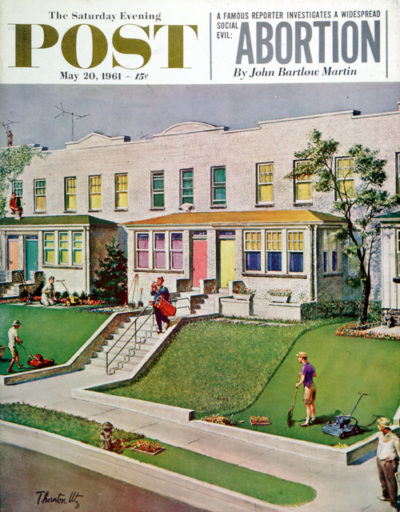
I'd Rather Be Golfing
May 20, 1961
On the other side of town, two equally fastidious neighbors are flummoxed—yes, that’s the word, flummoxed. In the May 20, 1961, cover by Thornton Utz, the lawn slaves work with push mowers and rakes while the guy from number 319 spends his Saturday as he darn well pleases, which includes lighting up a big cigar and taking his golf clubs for a walk, with nary a backward glance at his overgrown lawn.

There’s more than one way to green up a lawn. In Utz’s May 2, 1953, cover, one man simply laid concrete and painted it green—and flummoxed neighbors appear once again. As the 1953 Post editors observed, “What sound-minded man would rest in a hammock when he can sprain his muscles spading the sweet earth?” Sound-minded or not, we have to give the guy points for ingenuity.
It isn’t only private lawns that need tending. Stevan Dohanos’ 1945 lighthouse, bold in red and white stripes, includes a busy groundskeeper neatly trimming the weeds, with no help whatsoever from the lazy pooch nearby.
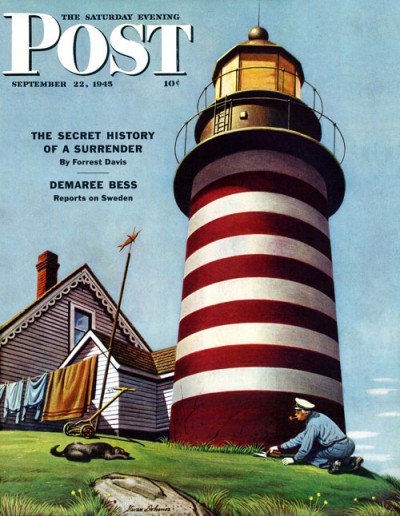
Lighthouse Keeper
9/22/1945
Fond of finding gardens in unusual spots, Dohanos also painted the August 9, 1947, cover depicting three railroad workers watering a flower bed with the train looming right behind them—a cover to please both gardeners and train buffs alike.
Possibly the oddest spot for a garden was found by artist John Atherton. In a junkyard in Pittsburgh, no less, amid heaps of rusty scrap iron, the derrick operator planted a small garden. The enterprising man even made a fence around his plot using strips of scrap iron. “Gardens are a form of autobiography,” said Sydney Eddison, highly acclaimed gardening author and teacher, so it says much about the man that he seeks beauty amid the unsightly.

City Park
June 5, 1954
In Falter’s June 5, 1954, cover, as a man tends a downtown plot of flowers, his territory seems to be invaded by a spaceman after his baseball. Okay, some covers are just hard to explain—you’ll have to click on it and see for yourself. The older couple in Stevan Dohanos’ May 26, 1951, cover do the watering. Well, at least he is, and we must say that’s a lot of garden to water with a hose. When Post editors asked Dohanos, “What ate some of the lettuce and radishes in your picture—rabbits?” the artist replied, “Certainly not. People. No pests in my gardens. They don’t like the smell of paint.” Well, we warned you that artists are an odd lot.
Gallery
Lighthouse Keeper
9/22/1945
Tidy and Sloppy Neighbors
July 1, 1961
I’d Rather Be Golfing
May 20, 1961
Painting the Padio Green
May 2, 1953
Lemonade for the Lawnboy
May 14, 1955
City Park
June 5, 1954
Trainyard Flower Garden
August 9, 1947
Spring Yardwork
May 18, 1957
Become a Saturday Evening Post member and enjoy unlimited access. Subscribe now

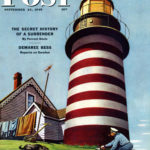



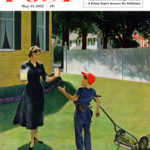
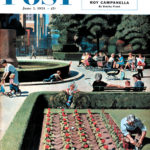

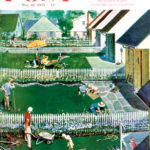


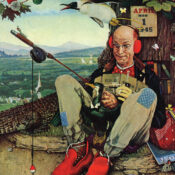
Comments
Identify with the sentiment pictorialized in, “I’d Rather Be Golfing.”
Because, however, I am a lousy golfer, the only positive thing I can say about my play is that I get far more exercise over 18 holes than almost anybody.